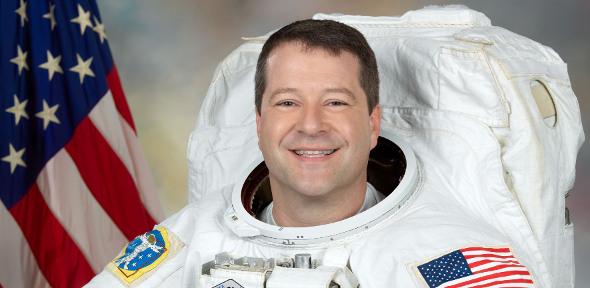
Last weekend in Florida was the shuttle launch of the spaceship Endeavour. Endeavour's Space Shuttle Mission: STS-130 is to deliver two European-built modules to the International Space Station (ISS). Alumnus Nicholas Patrick is onboard and has a leading role in the 13-day venture.
Nicholas spent last weekend with the rest of the Endeavour crew at the Kennedy Space Center, sleeping odd hours to time-shift his internal clock so that he will be wide awake during the hours in which he will make three spacewalks.
During the spacewalks known as EVAs (Extra-Vehicular Activity), he will help plug in the new connecting Node 3, also known as Tranquility, which will provide additional room for crew members and many of the space station’s life support and environmental control systems. Attached to the node is a cupola, which is a robotic control station with six windows around its sides and another in the center that will provide a panoramic view of Earth, celestial objects and visiting spacecraft.
This is Nicholas' second mission to date, his first was in 2006 when shuttle astronauts fitted a backbone segment, to the ISS.
Nicholas's duties this time are much more centre-stage. While a robot arm is used to unload modules from a visiting shuttle and position them on the station, it is the spacewalkers who must plug in all the "services" - the electrical, cooling and communications lines.
The EVAs are gruelling affairs that start long before the astronauts step out of the airlock. The night before the spacewalks, Nicholas and his co-walker Robert Behnken will camp out in the airlock. The practice is used to purge nitrogen from their bodies and prevent decompression sickness, also known as "the bends". Once outside it is an extremely full day's work, seven or more hours without a break.
Nicholas says his goal after this mission is to try to get selected for a long-duration mission on the space station. With the shuttle due to stop flying at the end of the year, the opportunities to go into orbit will be drastically reduced.
From 2011 onwards, for a few years at least, the only way into space for humans will be on board Russian Soyuz rockets, and they only seat three individuals compared with the shuttle's seven.
You can follow Nicholas via:
- the NASA website http://www.nasa.gov/mission_pages/shuttle/ where you can find status reports on the mission progress, inorbit activities and landing operations. This site also contains information on the crew and will be updated regularly with photos and video clips throughout the flight.
- through his Twitter profile http://twitter.com/Astro_Nicholas.
- the ISS tracking websites at http://spaceflight1.nasa.gov/realdata/sightings/ and http://www.heavens-above.com/, where you can work out when the ISS, with Nicholas on board, is likely to come over your horizon. The best time to catch the fast moving "star" is just before dawn or just after sunset.

